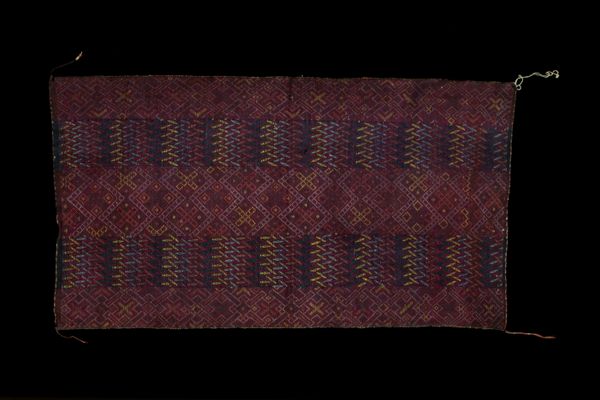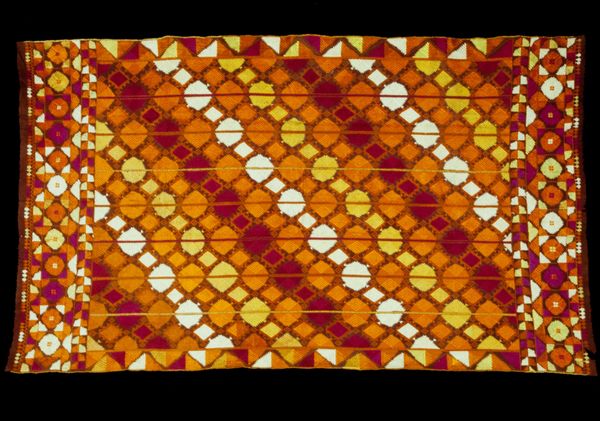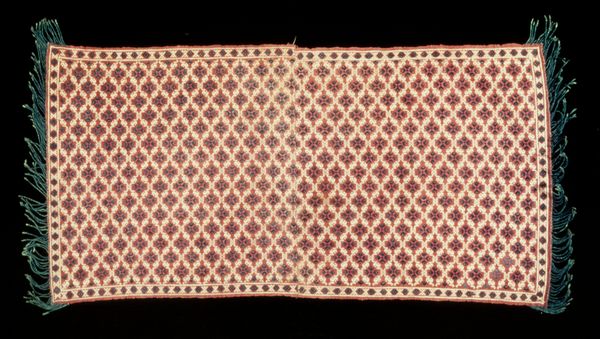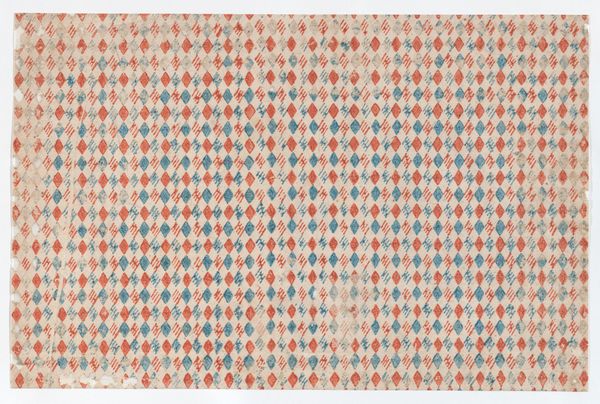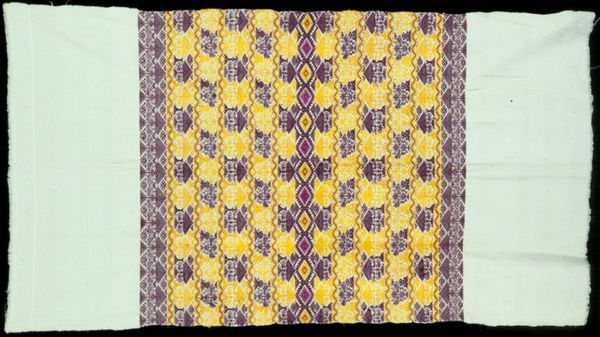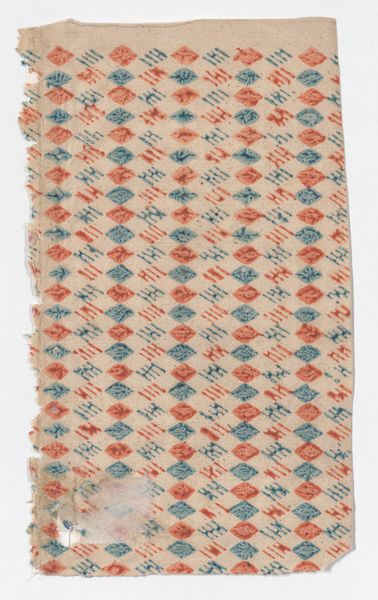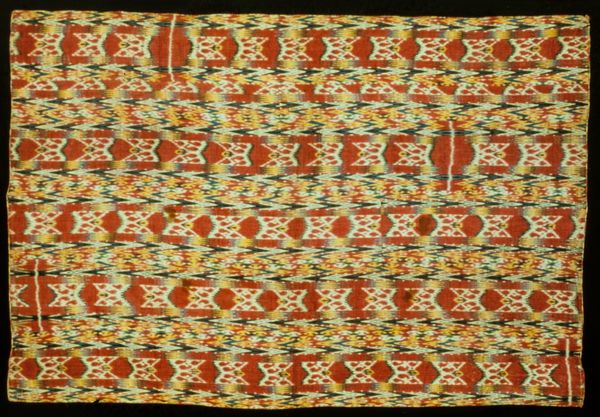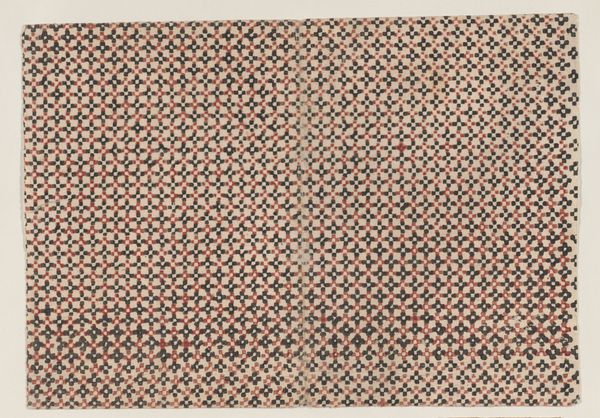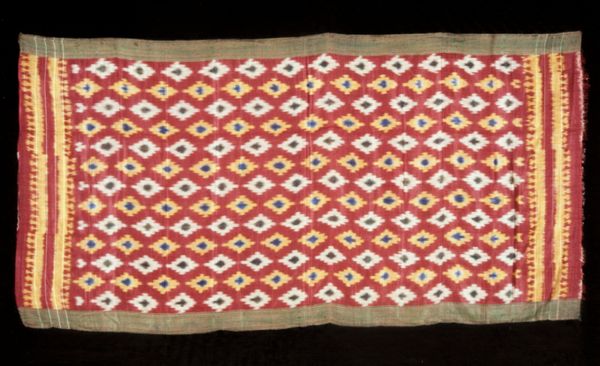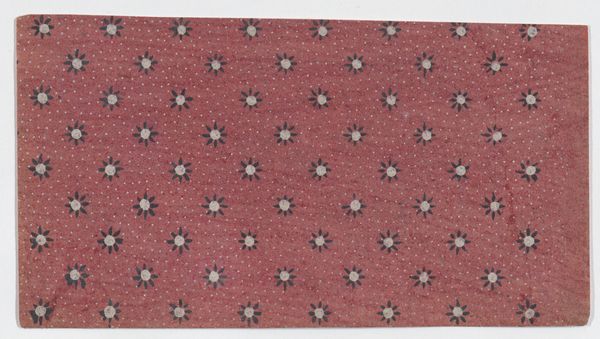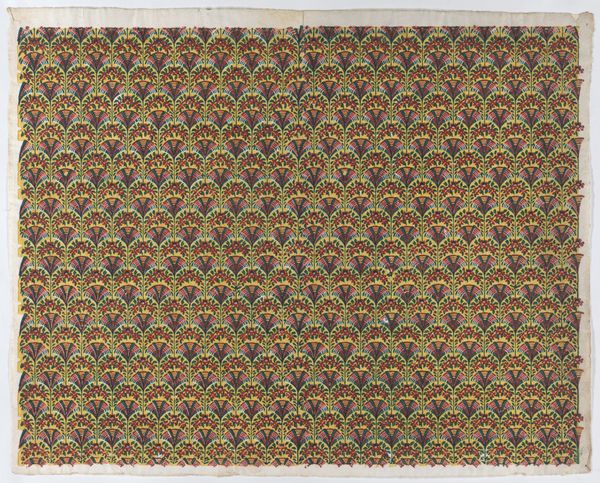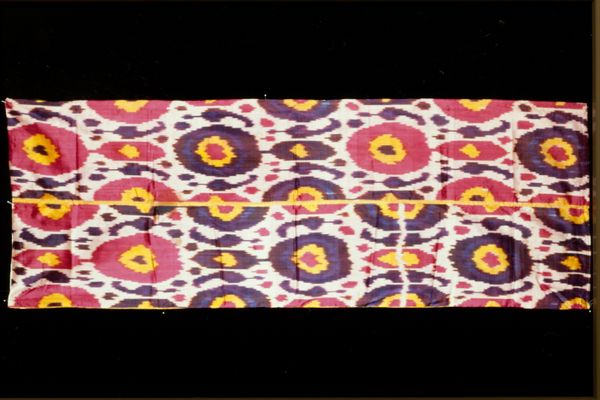
textile
#
asian-art
#
textile
#
geometric pattern
#
organic pattern
#
geometric
#
repetition of pattern
#
decorative-art
Dimensions: 57 1/2 x 120 1/2in. (146 x 306.1cm)
Copyright: Public Domain
Curator: This is a magnificent Doshalla, a shawl likely dating back to the 18th century. Editor: My immediate reaction is to the colors—the deep, muted golds, reds, and purples seem to speak to another era, a different climate, perhaps. I imagine a history soaked into these dyes. Curator: Absolutely. Textiles such as this, part of the decorative arts holdings here at the Minneapolis Institute of Art, functioned within specific economic and social landscapes, carrying stories of trade, craft guilds, and elite consumption. Consider who might have worn this and in what context. Editor: It’s beautiful, though somewhat overwhelming with the dense geometric pattern, a dizzying effect. I wonder about the artisans and the social structures they lived in as they constructed the organic design. How were these patterns initially conceived and iterated through gender, race, and class? Curator: These shawls were not just decorative; they served as potent visual markers of identity, social status, and political affiliation. Their production often relied on intricate networks involving specialized craftspeople, merchants, and ruling elites, influencing trade across the continent and beyond. Editor: Thinking about that, does the sheer intricacy represent a kind of enforced labor, reflecting complex power dynamics? The repetition can speak volumes about imposed monotony—a potent contrast with our concepts of free artistic expression today. Also, who wore this and did it give them more prestige or less based on intersections with their race and gender? Curator: The creation of a single Doshalla was indeed an investment of time, labor, and expertise and would contribute greatly to an individual's standing in society. Access to these textiles also reflects the politics of image within cultural systems of dress. How might the presentation and display of these textiles in our modern galleries continue or disrupt these inherited hierarchies? Editor: Thinking of it now, perhaps the repeated motif of the paisleys is less overwhelming and dizzying, and more soothing if we connect the patterns and their frequency to a sort of meditation or prayer. To create it, yes, potentially problematic exploitation. To wear it could signal identity and belonging. And to contemplate it centuries later means confronting complex pasts, don’t you think? Curator: Indeed. And appreciating, in a contemporary space, the lasting legacy of these intricate woven objects, not just as aesthetic objects but as carriers of historical and cultural significance.
Comments
No comments
Be the first to comment and join the conversation on the ultimate creative platform.
